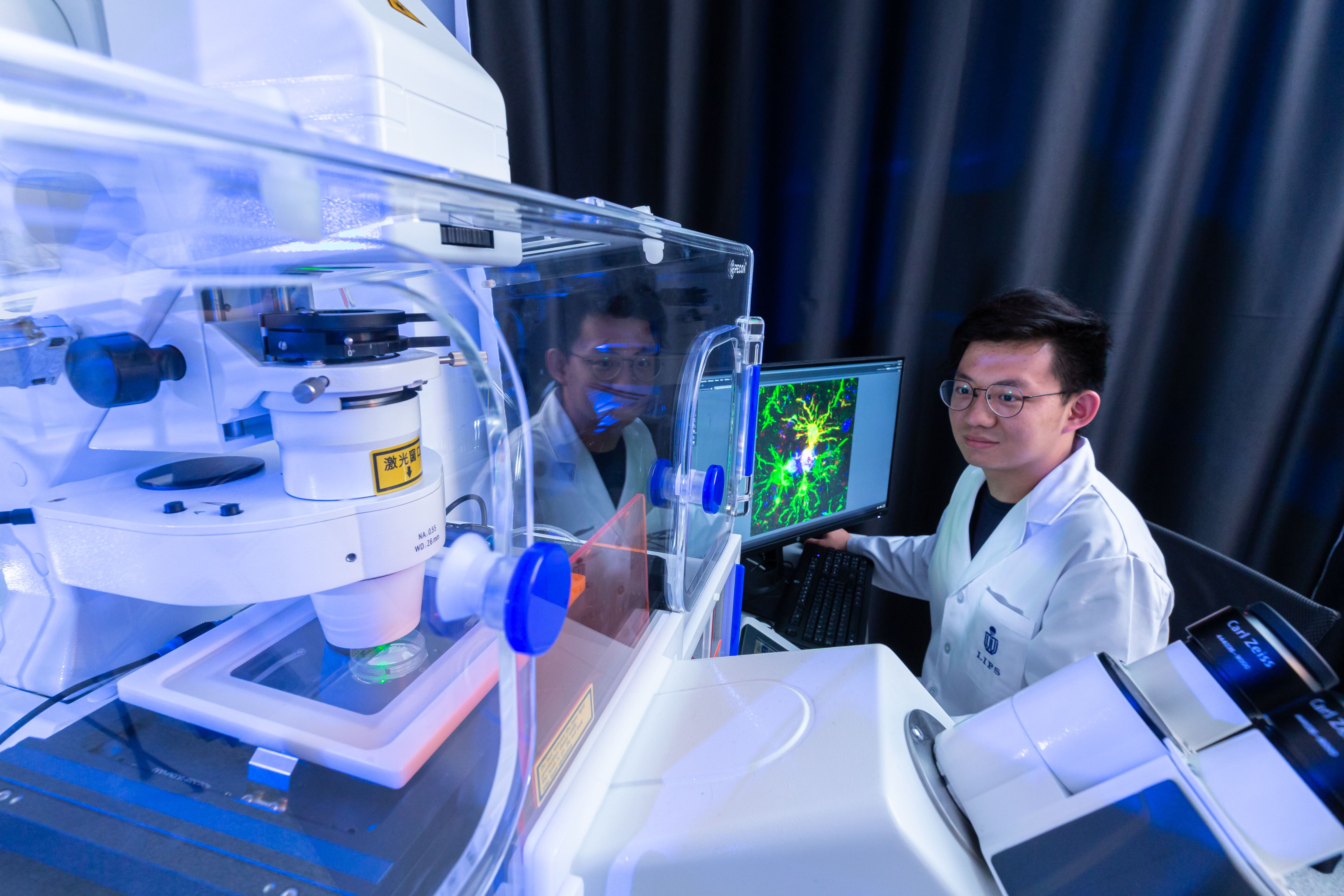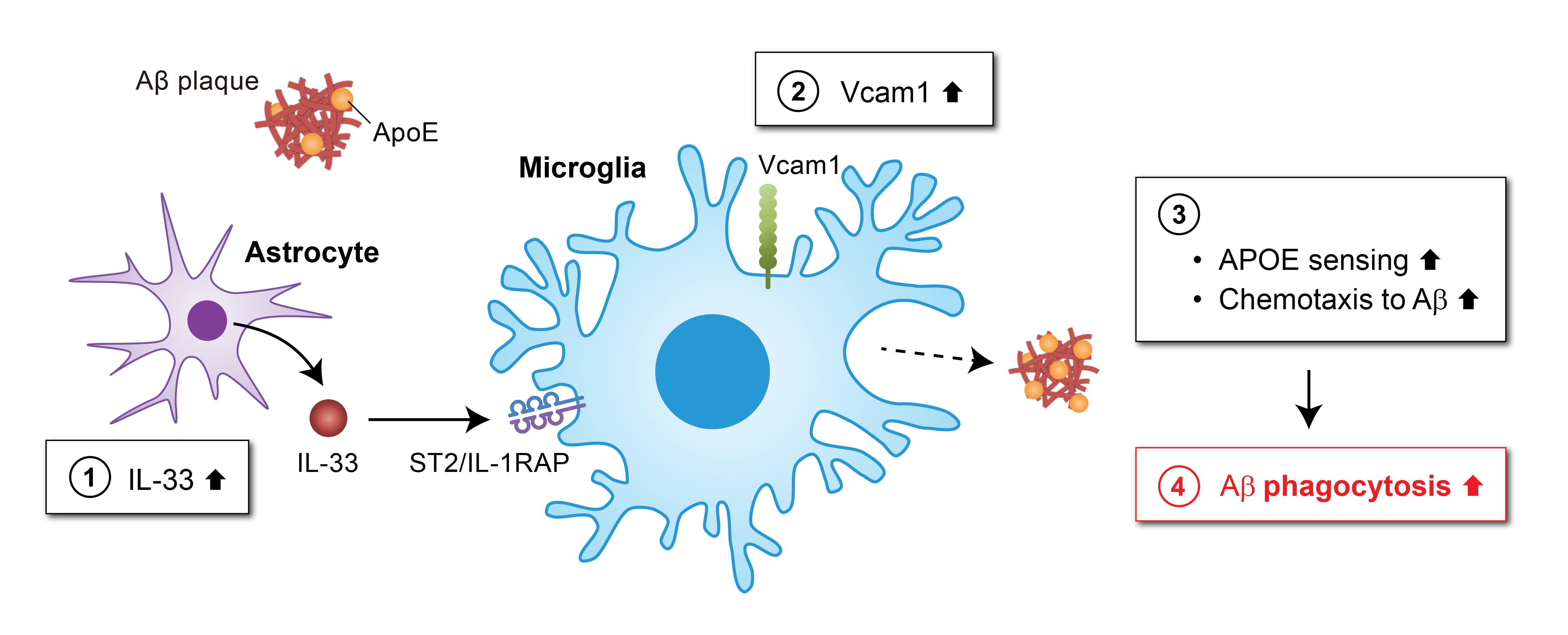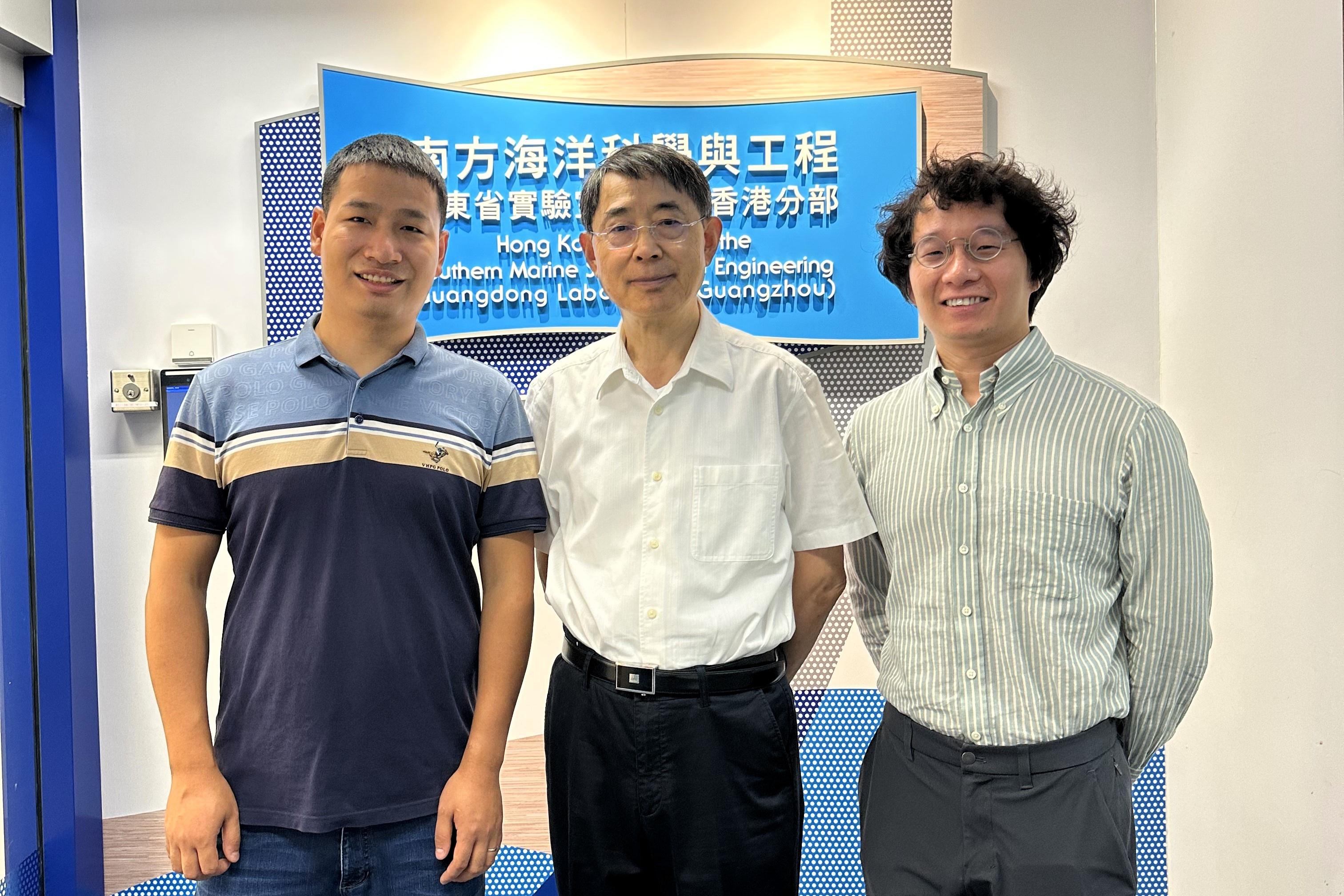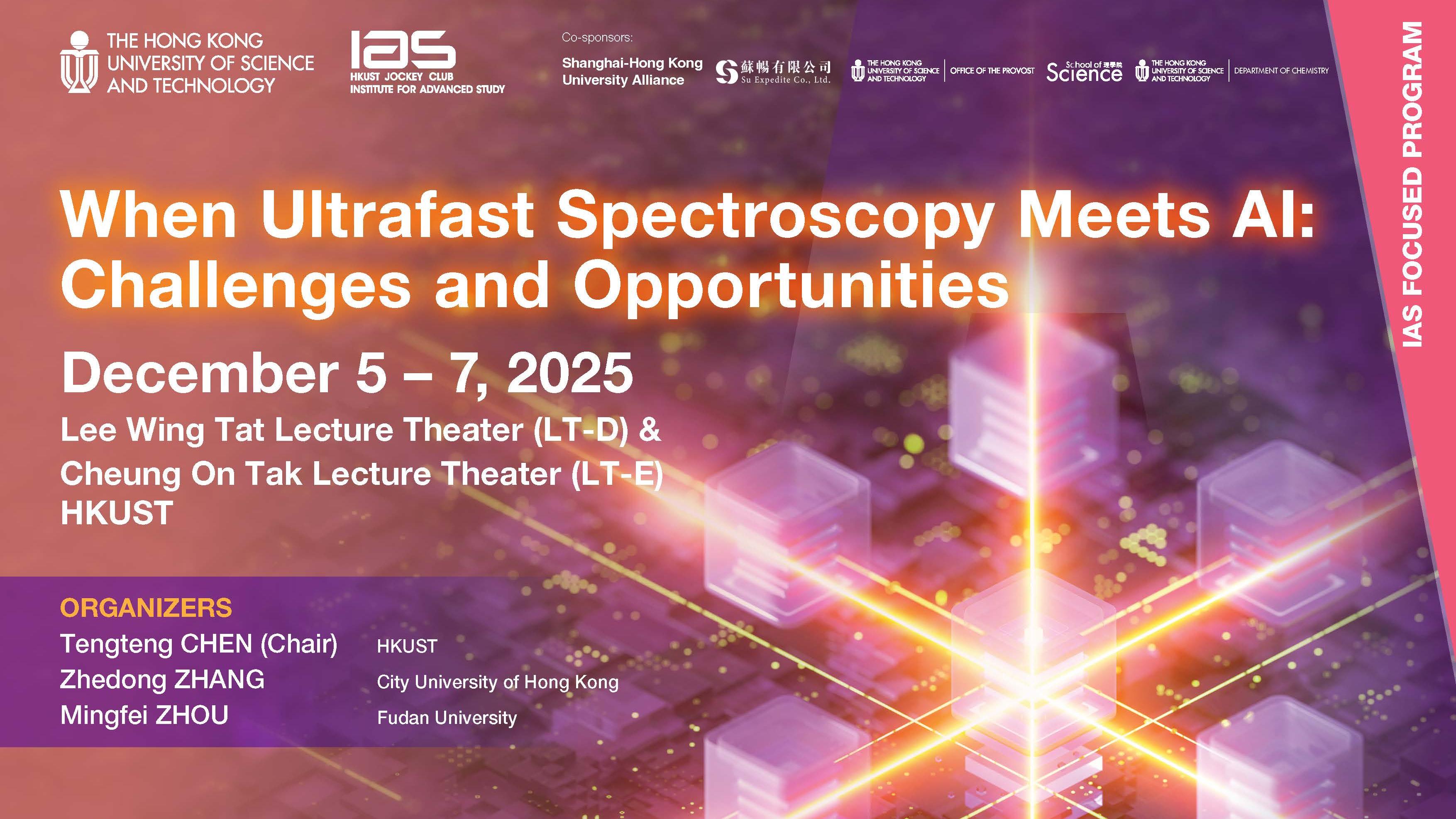A research team led by Prof. Nancy IP, the President and The Morningside Professor of Life Science at The Hong Kong University of Science and Technology (HKUST), and the Director of the Hong Kong Center for Neurodegenerative Diseases (HKCeND), has identified VCAM1, a cell surface protein found on immune cells of the brain, as a therapeutic target for Alzheimer’s disease (AD), paving the way for developing novel therapeutics to combat this debilitating condition.
AD is a devastating neurodegenerative disorder that affects over 50 million people worldwide. A key pathological hallmark of the disease is the accumulation of amyloid-beta (Aβ) plaques in the brain, which leads to progressive decline in cognitive function. Microglia, resident immune cells of the brain, are thought to play a vital role in the clearance of Aβ plaques, a function that is impaired in AD.
The research team sought to investigate how microglia control Aβ clearance and how they become dysfunctional in AD. Through their elegant study, the team discovered that VCAM1, a cell surface protein on microglia, mediates microglial migration towards Aβ and promotes microglial clearance of Aβ. The team also discovered that another protein found in Aβ plaques, APOE, acts in conjunction with VCAM1 to mobilize microglia to Aβ plaques. The team further found that stimulating the “VCAM1–APOE” pathway reduced AD pathology in a mouse model of AD. These findings suggest that proper VCAM1 functioning is critical for microglial migration and clearance of Aβ.
The team also examined VCAM1-expressing microglia in the brain tissue of AD patients. Interestingly, AD patients exhibited elevated levels of soluble VCAM1 in the cerebrospinal fluid, which suggested dysregulated VCAM1-APOE signaling. This observation correlates with reduced clearance of Aβ by microglia.
Collectively, the findings of the study implicate VCAM1–APOE signaling in the pathogenesis of AD and identify VCAM1 as a promising target for AD therapy.
“These exciting findings have not only expanded our understanding of the disease pathology, but also unveiled a new target for developing disease interventions.” said Prof. Nancy Ip. “While there is an urgent need for effective disease-modifying treatments, we need to first identify the right drug targets. We will continue our efforts using innovative approaches towards this goal.”



